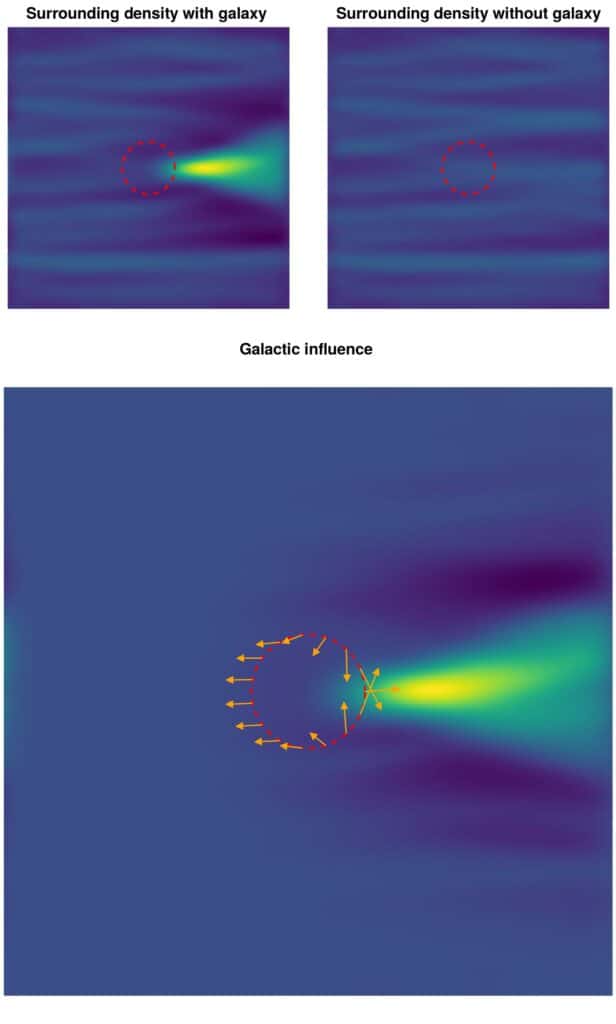The elusive speed of dark matter might be finally coming to light. By focusing on the movement of galaxies relative to dark matter, Estonian Research Council researchers have devised a method that could provide new insights into the nature of this mysterious component of the cosmos.
Dark matter — an invisible substance that makes up about 85 percent of the universe’s mass –does not emit, absorb, or reflect light, making it detectable only through its gravitational effects on visible matter. This research hinges on the interaction between galaxies and dark matter. As galaxies move through space, they attract dark matter particles due to gravity. However, the particles’ trajectory only changes after they have passed the galaxy, creating an increase in density — or an overdensity — behind it. This phenomenon, known as dynamical friction, subsequently slows down the galaxy.
The study’s breakthrough lies in observing the effects of dynamical friction on galaxies to measure dark matter’s speed.

“The strength of dynamical friction, in turn, depends on how quickly dark matter particles pass the galaxy, that is, how long the galaxy has time to change the trajectory of the dark matter particles,” say researchers in a media release.
This principle allows scientists to infer the speed of dark matter based on the galaxy’s slowdown rate.
One of the key visual indicators used in this research is the lopsidedness of galaxies. This asymmetry results from the differential dynamical friction across various parts of a galaxy, akin to the tidal forces experienced on Earth due to the Moon’s gravity. Interestingly, this method does not require knowledge of the dark matter particles’ size, as their gravitational effect remains consistent regardless of their scale.
Identifying suitable galaxies for this research is relatively straightforward, with about 30% of galaxies in space exhibiting some degree of lopsidedness. Mot all asymmetry in galaxies is caused by dark matter, though. Collisions with other galaxies, for example, can also lead to an uneven shape. Therefore, the study emphasizes the importance of selecting galaxies that are as isolated as possible to ensure that their lopsidedness can be attributed primarily to dark matter.
This approach represents a significant advancement in cosmology, offering a novel way to study dark matter’s velocity. Understanding how fast dark matter moves relative to galaxies could shed light on its properties and help test new models of dark matter.
Cosmology continues to be a vital field for exploring the fundamental laws of physics. By calculating the speed of dark matter, scientists hope to unravel more about the universe’s composition and the mysterious forces that govern it. This research not only expands our knowledge of dark matter but also paves the way for future discoveries in theoretical physics and the broader quest to understand the universe’s mysteries.
The study is published in the journal Astronomy & Astrophysics.













Comments